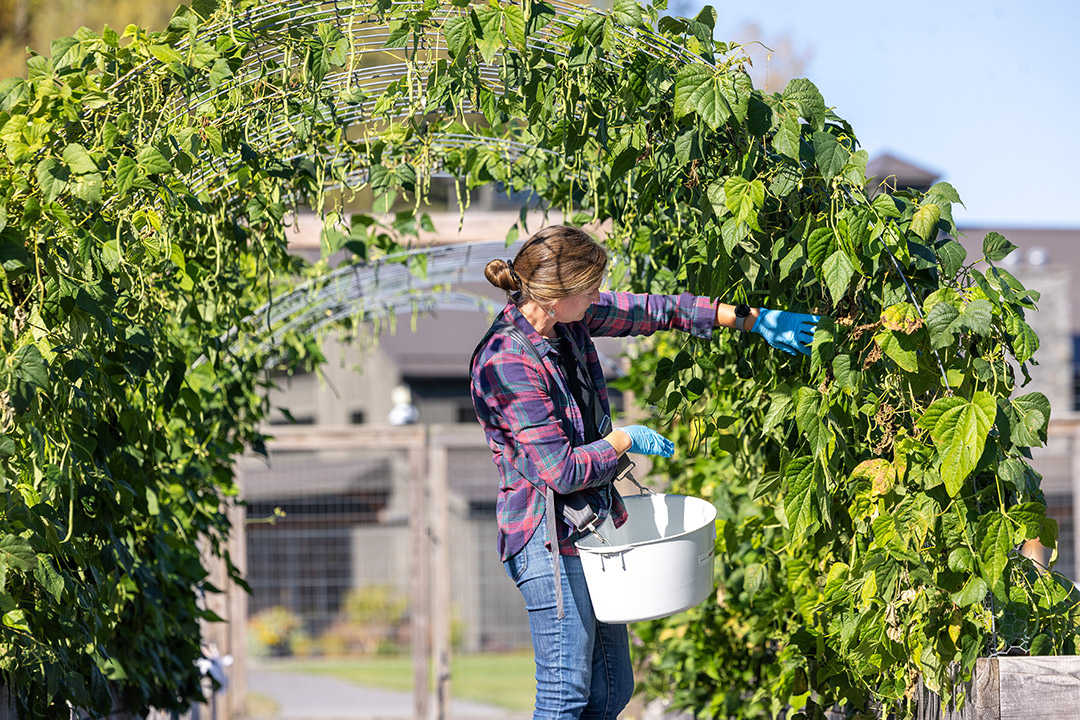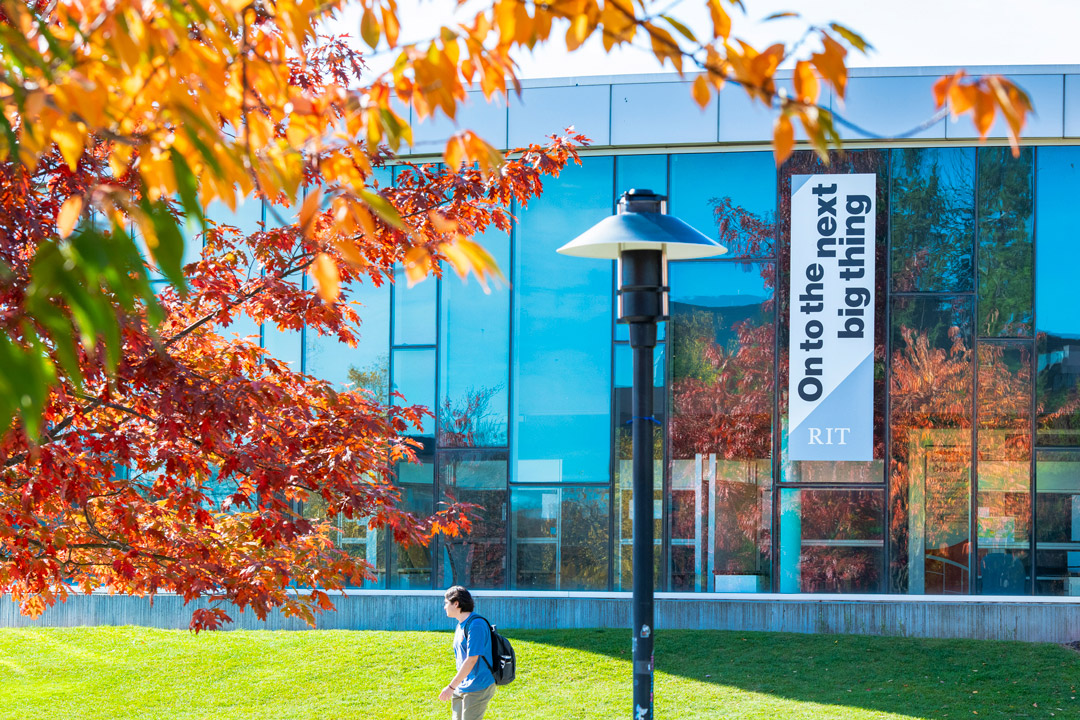Some 3,000 pounds of vegetables and herbs used for RIT meals
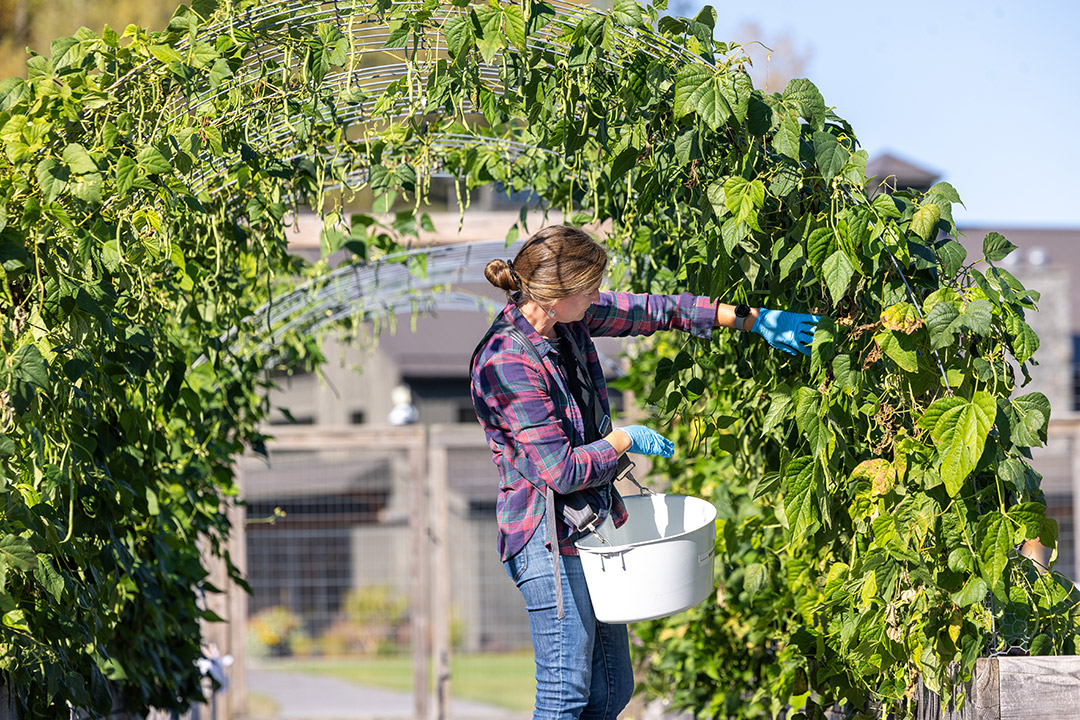
Some 3,000 pounds of vegetables and herbs are grown annually at a high-yield garden at RIT’s Tait Preserve. Meghan Gilbert, senior gardens and grounds specialist at Tait, harvests pole beans to be used at Gracie’s and RIT Catering.
Some 3,000 pounds of vegetables and herbs are grown annually at a high-yield garden at RIT’s Tait Preserve. Meghan Gilbert, senior gardens and grounds specialist at Tait, harvests pole beans to be used at Gracie’s and RIT Catering.
Students dining at Gracie’s and Brick City Café might not know it, but some of the vegetables they’re eating may have been harvested that very same day on RIT property.
In its fourth year of production with a “farm to table” spirit, a 120-foot by 60-foot garden at the university’s Tait Preserve in Penfield, N.Y., yields about 3,000 pounds of vegetables and herbs per year, used for healthy meals in dining areas and at special events served by RIT Catering.
The raised-bed garden was designed to accommodate high density and high production to provide fresh produce to RIT. It yields green beans, Swiss chard, green onions, spinach, tomatoes, squash, kale, cherry tomatoes, culinary pumpkins, beets, eggplant, cilantro, fingerling potatoes, three types of peppers, and a variety of herbs.
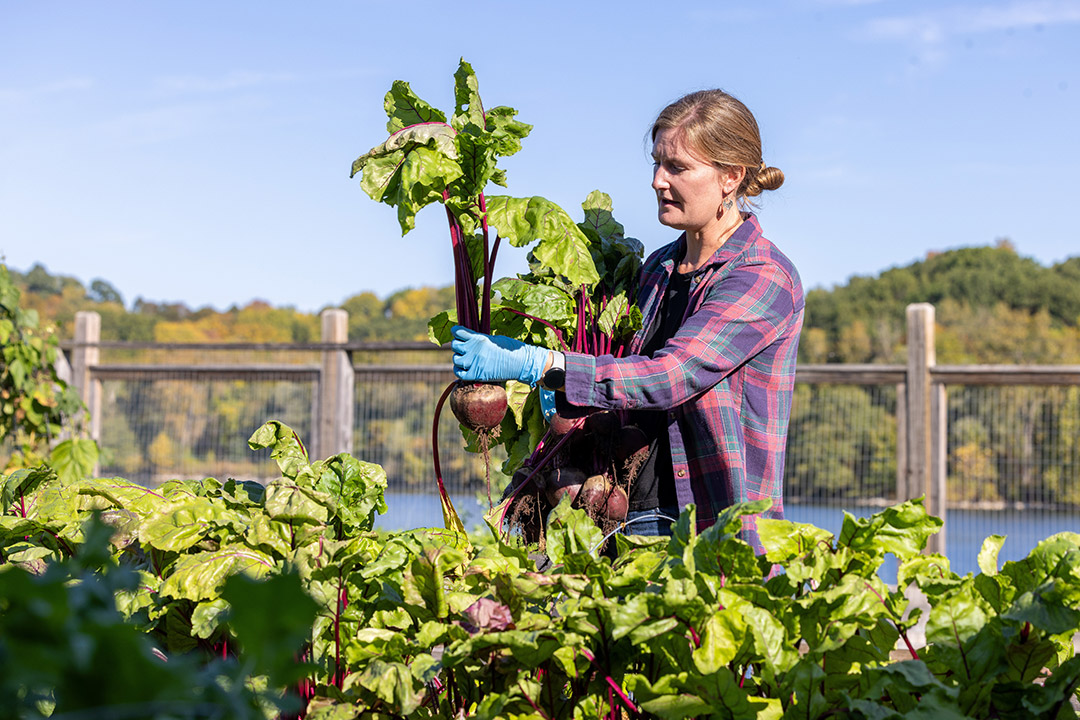
Carlos Ortiz/RIT
Meghan Gilbert, senior gardens and grounds specialist at RIT’s Tait Preserve, harvests beets to be used at Gracie’s and RIT Catering.
“Sometimes RIT Dining has had a hard time sourcing specialty ingredients such as habaneros and scotch bonnet peppers on a consistent basis,” said Meghan Gilbert, the preserve’s senior gardens and grounds specialist. Some of those ingredients are necessary for Jamaican and Haitian dishes, which have been added as occasional dining options to accommodate requests from students.
“We’re able to fill a niche by growing items they cannot source elsewhere,” she said.
The preserve is a former quarry site, with very sandy soil not suited for vegetable growing. So, the garden beds are raised 30 inches off the ground, with topsoil and compost used to sustain the plants.
“We space plants closely for high-volume output,” Gilbert said. “We try to provide RIT Dining with as much fresh produce as possible during our growing season.”
Harvesting can be done as late as December, especially for kale and other cold-hardy crops, she said. Student employees pick the mature vegetables and herbs and place them in produce bins for delivery to RIT.
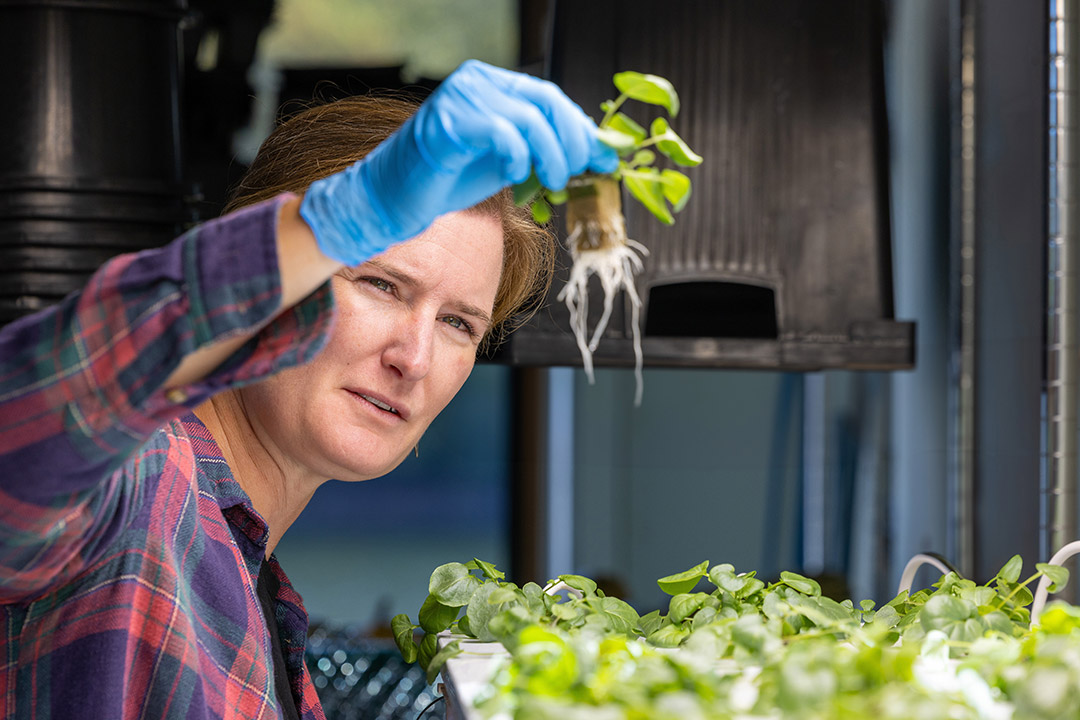
Carlos Ortiz/RIT
A hydroponic system at Tait Preserve is being used to grow watercress for use at Gracie’s and RIT Catering as ingredients, in salad bars, side dishes, or as garnishes.
“Having this garden provides a huge advantage in the quality and freshness of the produce,” Gilbert says. “The shelf life, taste, and nutritional value is much better when you can serve it quickly after the harvest, in our case, sometimes as soon as the same day. You’re not getting that from any other supplier. It’s hyper local. It’s literally grown 15 minutes away from campus and delivered with an electric car.”
In addition to the garden, the grounds also feature an orchard with about 600 trees of 11 different apple varieties that were planted in 2022 and could be ready with a viable crop next year. Most will be used for eating, and some will be used for baking or garnishing.
Gilbert meets with the staff from RIT Dining every winter to see if there’s anything new they’d like her to try to grow. She’s already experimenting with microgreens and is using a hydroponic system to grow watercress, which she said was deemed the most nutrient-dense vegetable by the Centers for Disease Control.
RIT has set a goal to serve more plant-based food. Gilbert said culinary mushrooms could help with that effort, with future production plans in the works.
“It’s a great little niche for us to try to figure out how we can play a part in this goal,” she said.



